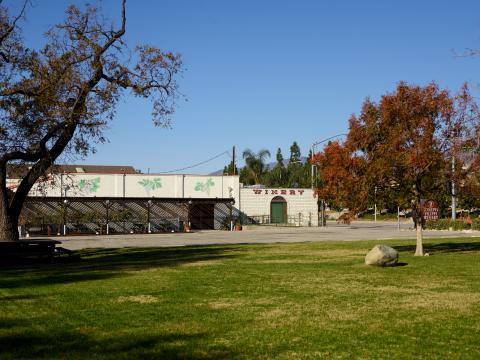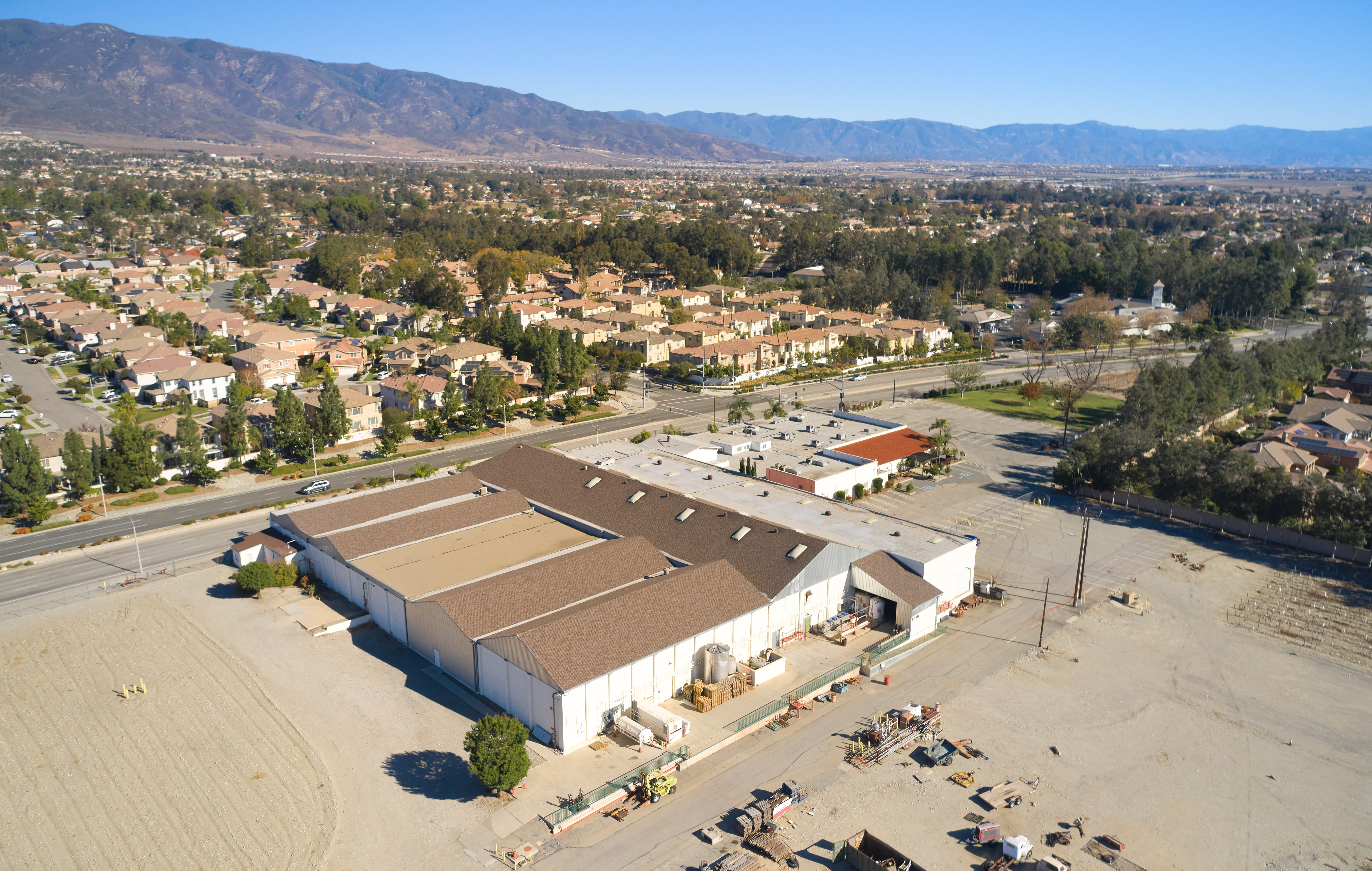
The Regina Winery is located at 12467 Base Line Road, just west of Day Creek Boulevard. This site is within close proximity to the I-210 Freeway to the north, and the I-15 Freeway to the east, and the Victoria Gardens outdoor regional shopping destination to the south. The image below shows the existing Joseph Filippi Winery buildings; the entire roughly 14.2 acre Regina Winery property includes these buildings and the surrounding undeveloped parcels shown in the image.
This historic name of this property was the Ellena Brothers Winery/Regina Grape Product Co. The winery is one of five wineries surviving out of some 60 such operations which once dominated the physical, economic and cultural livelihood of the Cucamonga Valley.
Winery co-founder John B. Ellena focused his efforts after 1949 on producing wine vinegar almost exclusively, and the Regina Grape Products Co. (as it was known by 1959) was the nation’s leading producer of wine vinegar. Along with the nationwide distribution of wine vinegar, the winery itself took on the flavor of a destination theme park, with daily self-guided tours, an annual grape festival, and resident miniature horses imported from Argentina.
In 1968, the state’s first restaurant on a winery site was opened. Sold to Heublein and later to Del Monte and its successors, the winery continued to produce wine vinegar and other products until 1992.
The property was purchased in 1993 by the City’s Redevelopment Agency. Soon after, the winery was leased to the Filippi family and began operations as the Joseph Filippi Winery and Vineyards. Since that time, the Filippi's have worked to revitalize the old vineyards, plant new vines, and operate the winery at the location pursuant to the lease. Since 1922, the Filippi family had grown grapes and made wine in the Cucamonga Valley at other locations in the area.
In 1995, the federal government established the Cucamonga Valley as an approved viticulture area. The new law enabled wineries use of the words “Cucamonga Valley” on their wine labels for wines that use at least 85% Cucamonga grapes.
While the winery function existed prior to 1949, its primary significance dates to the period 1949-1971, when the facility produced a national brand of wine vinegar under the Regina label and the winery itself became a popular destination point for tourists. The 1949-1971 period of significance does not meet the National Register’s 50-year requirement and the property does not meet the criteria of exceptional importance.



